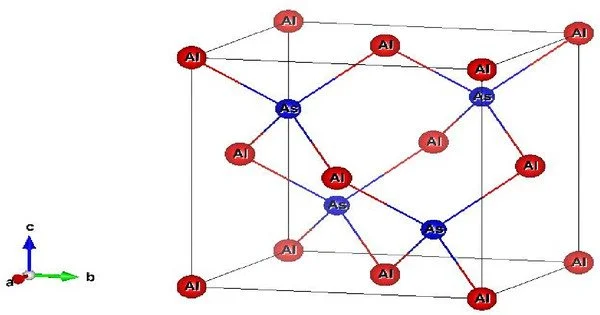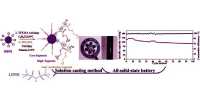Aluminum gallium arsenide (AlGaAs) is a semiconductor material that is used in the manufacture of optoelectronic devices such as lasers and light-emitting diodes (LEDs). It is a semiconductor material with very nearly the same lattice constant as GaAs, but a larger bandgap. It is an alloy of aluminum, gallium, and arsenic, and it has unique electronic properties that make it useful in these applications.
AlGaAs has a direct bandgap, which allows for efficient light emission and high-speed electronic performance. The bandgap can be adjusted by changing the aluminum-to-gallium ratio in the material, which makes it possible to tune the material’s properties for specific applications. This versatility makes AlGaAs an important material in the semiconductor industry.
The chemical equation AlGaAs should be viewed as a condensed version of the preceding, rather than a specific ratio. The bandgap ranges from 1.42 eV (GaAs) to 2.16 eV. (AlAs). The bandgap is direct for x < 0.4. The refractive index varies between 2.9 (x = 1) and 3.5 (x = 0) and is related to the bandgap via the Kramers-Kronig relations. This enables the fabrication of Bragg mirrors, which are used in VCSELs, RCLEDs, and substrate-transferred crystalline coatings.
In GaAs-based heterostructure devices, aluminium gallium arsenide is used as a barrier material. The electrons are constrained to a gallium arsenide region by the AlGaAs layer. A quantum well infrared photodetector is an example of such a device (QWIP). It is commonly used in GaAs-based double-heterostructure laser diodes that emit red and near-infrared light (700-1100 nm).
Overall, AlGaAs has unique properties that make it a widely used material in various electronic and optoelectronic applications, ranging from high-speed communication devices to solar cells and optical sensors.
Safety and toxicity aspects
The toxicology of AlGaAs has not been fully investigated. The dust is an irritant to skin, eyes and lungs. The environment, health and safety aspects of aluminium gallium arsenide sources (such as trimethylgallium and arsine) and industrial hygiene monitoring studies of standard MOVPE sources have been reported recently in a review.
In addition to its use in optoelectronics, AlGaAs is also used in high-frequency transistors, microwave devices, and high-speed integrated circuits. Its high electron mobility, low parasitic capacitance, and high thermal stability make it an attractive material for high-frequency and high-power applications. Overall, AlGaAs is a versatile and important material in the semiconductor industry due to its unique combination of electrical, optical, and thermal properties.














